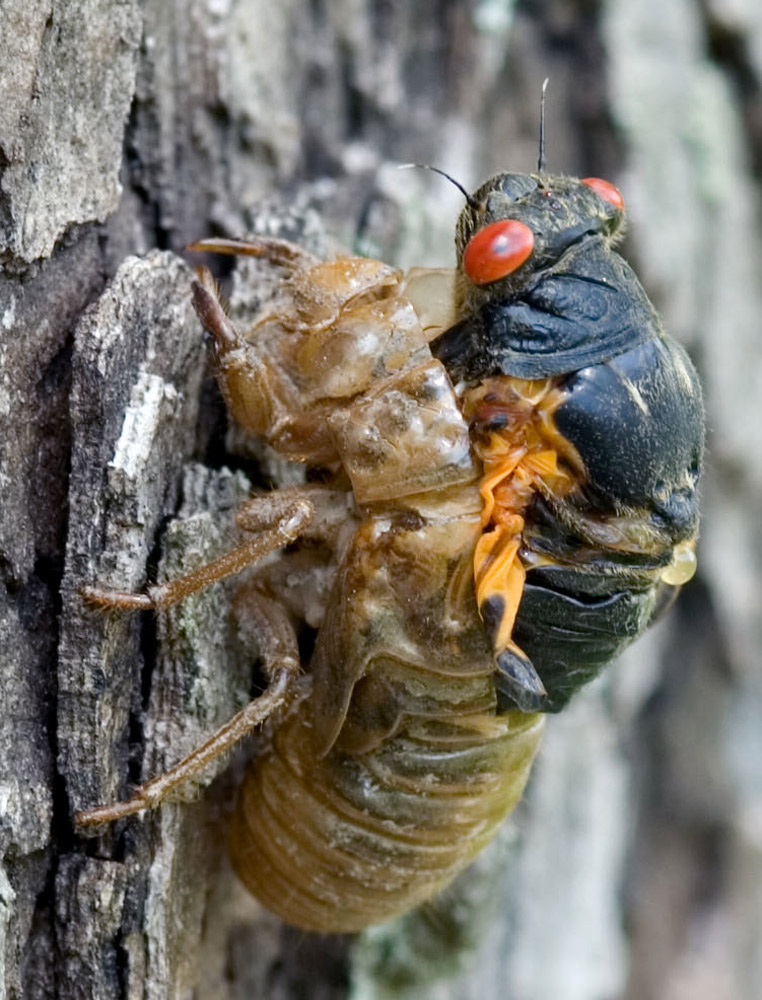Tibicen plebejus molt sequence, photos by Iván Jesus Torresano García. Spain.
Tibicen plebejus or Lyristes plebejus, depending on who you ask.
Skip to Part 1, Part 2, or Part 3.
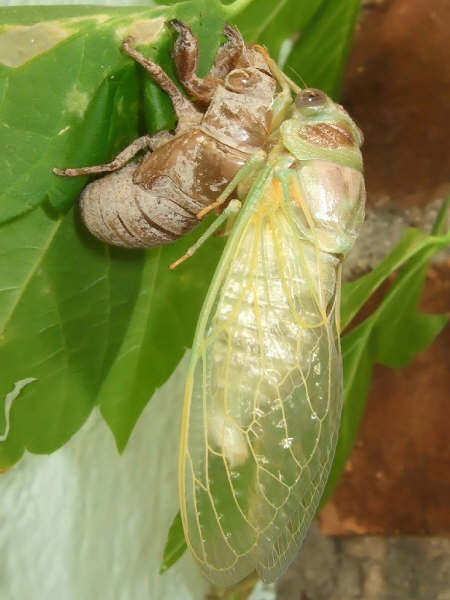
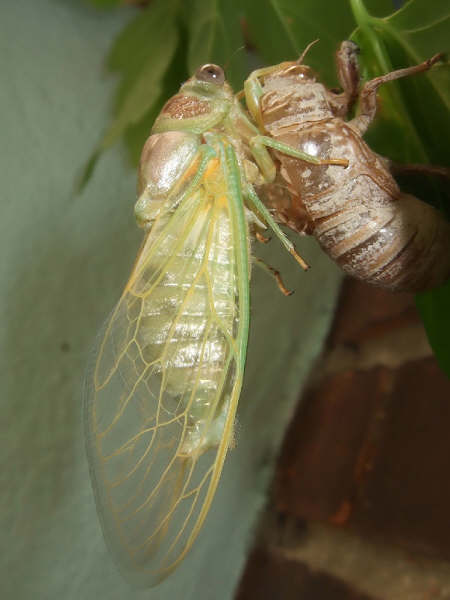
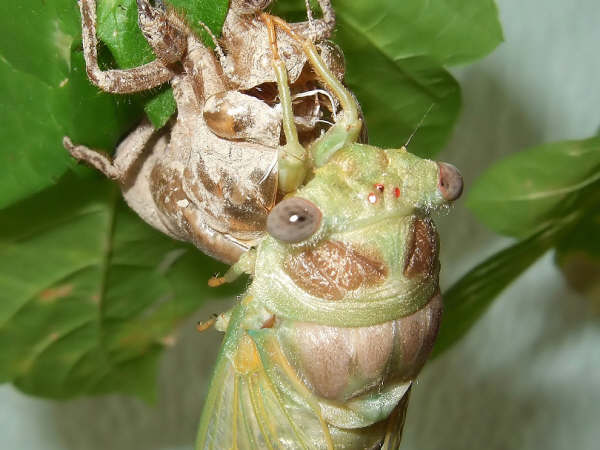
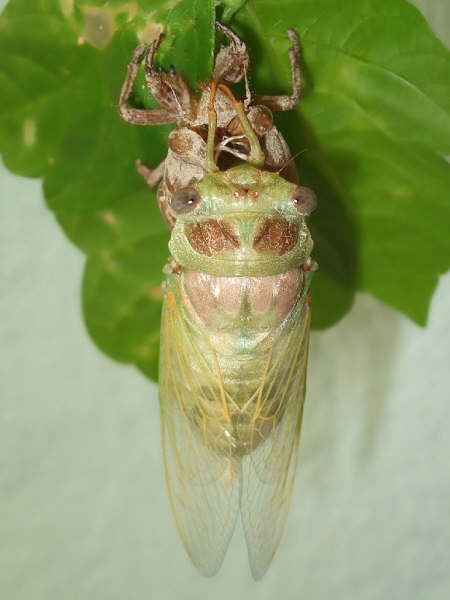
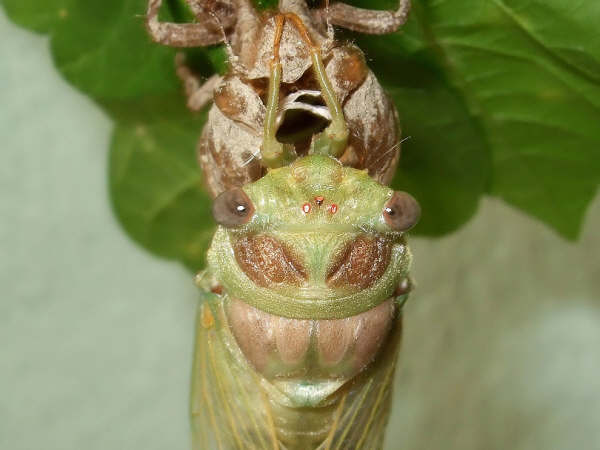
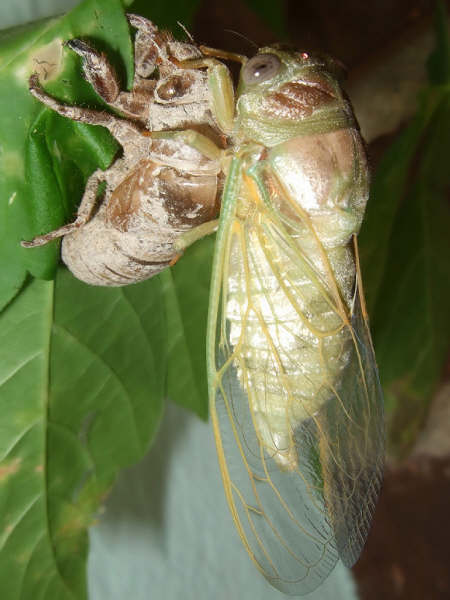
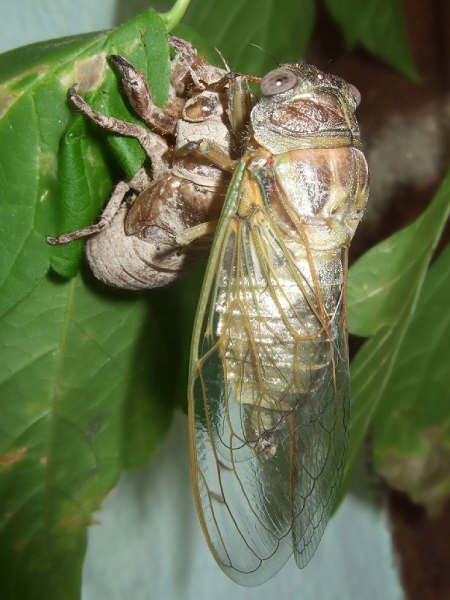
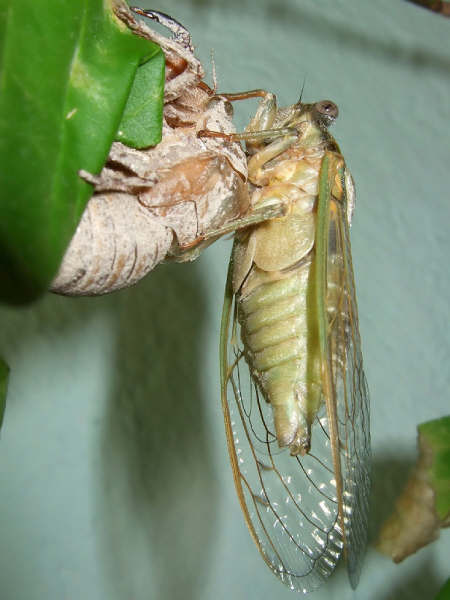
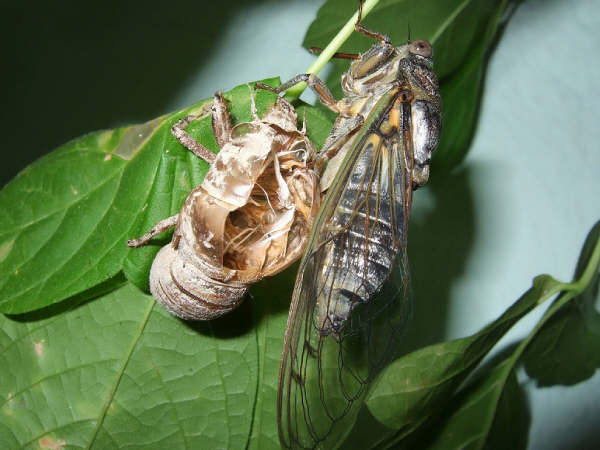
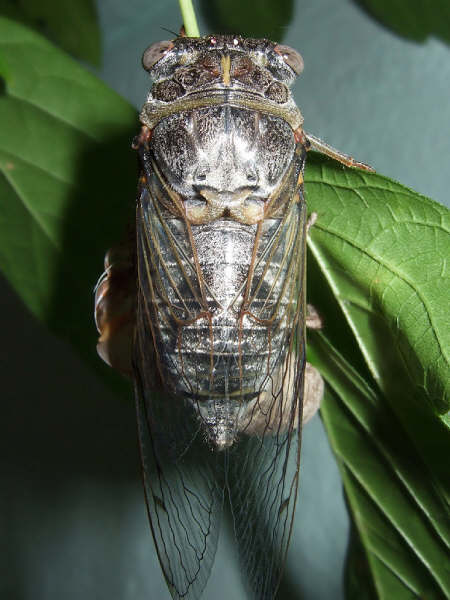
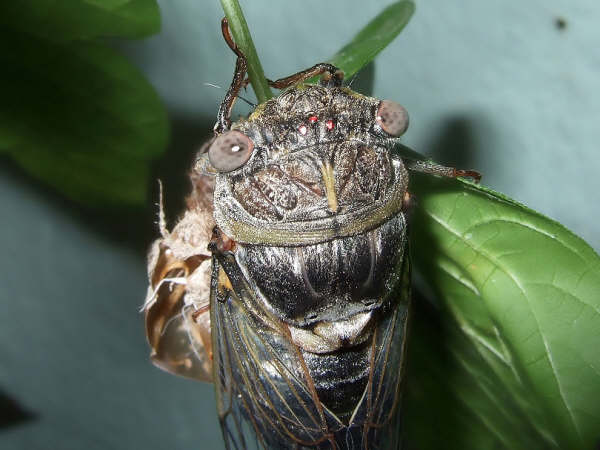
This is a series of photos of a cicada molting by Gina Scarborough taken in Florida. It appears to be a Neotibicen sp, and definitely a cicada belonging to the tribe Cryptotympanini.
The pink color is amazing. Click the photos to get to larger versions.
Nymph:
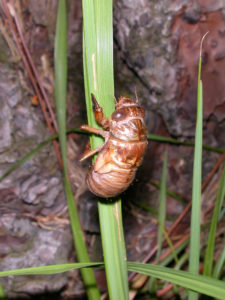
Splitting the skin:
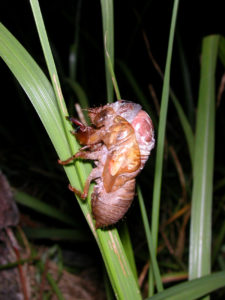
Head coming through:
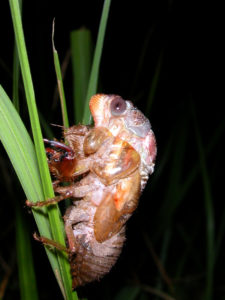
Mesonotum is out:
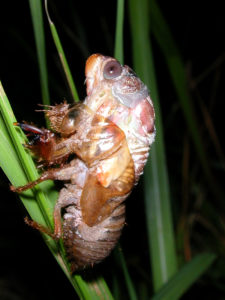
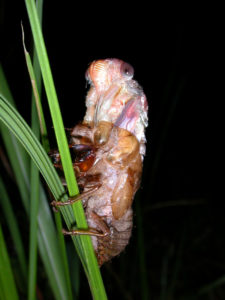
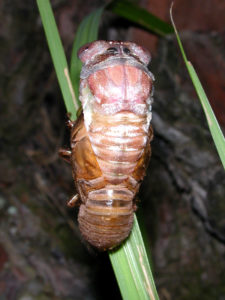
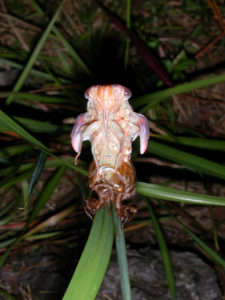
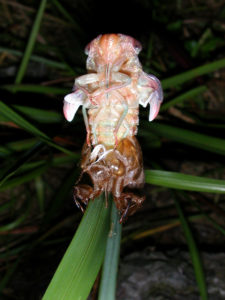
Wings start to expand:
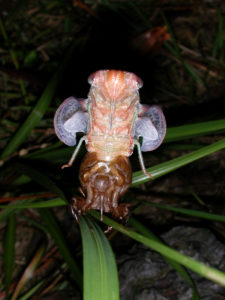
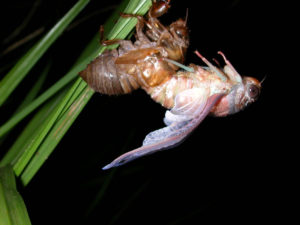
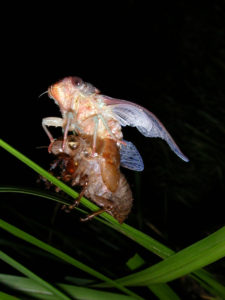
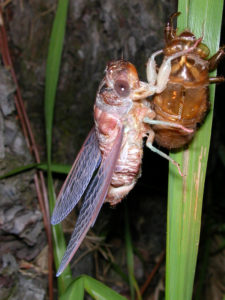
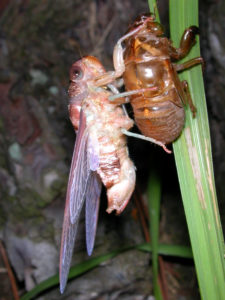
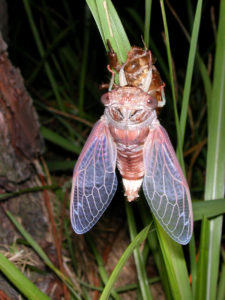
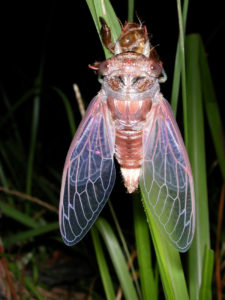
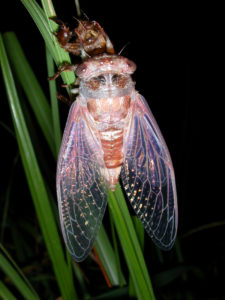
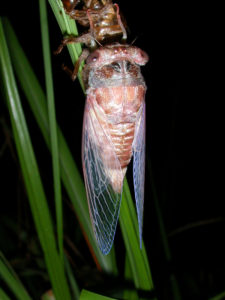
Brood X Magicicada photos by Nate Rhodes from 2004.
Recently molted Magicicada, still hanging from its nymphal skin:
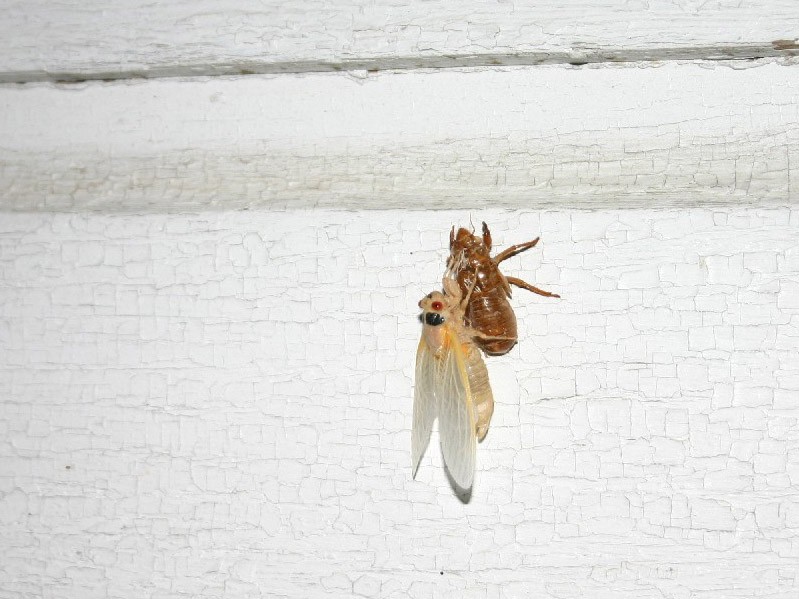
Molting Magicicada:
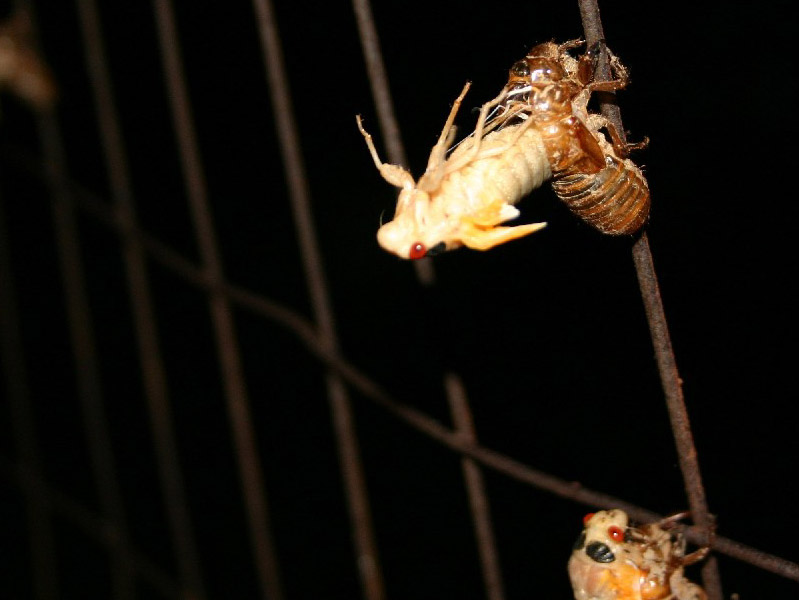
Two adult Magicicada:
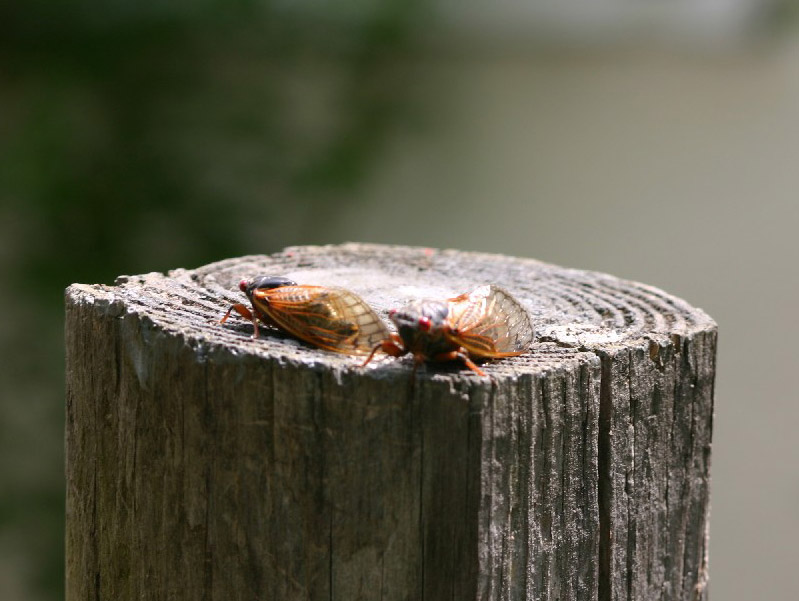
Recently molted Magicicada hanging from its nymphal skin:
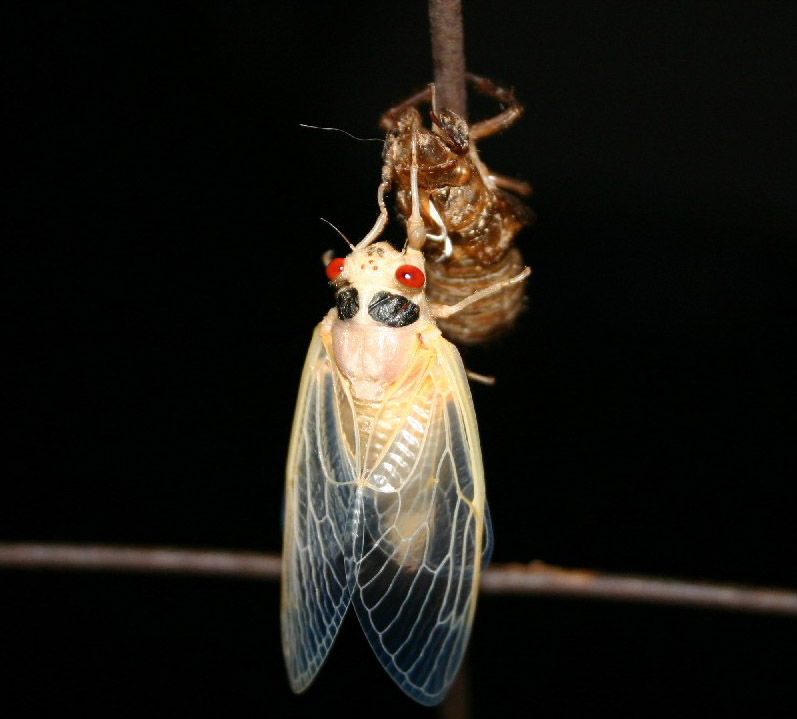
Molting Magicicada:
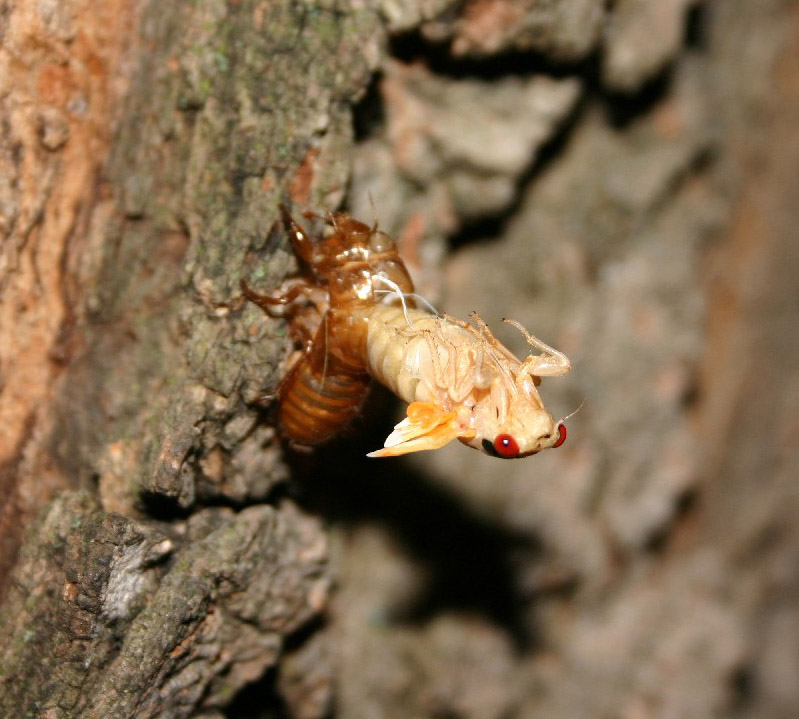
Occasionally cicadas get stuck in their nymphal skins (exuvia) during the molting process (ecdysis). The reasons why might be external forces like temperature, rain, wind, interference by other cicadas or other insects like ants, or something wrong with the cicada itself.
This is a photo sent to us by Liz G back in 2007 during Brood XIII from Peoria, Illinois.
